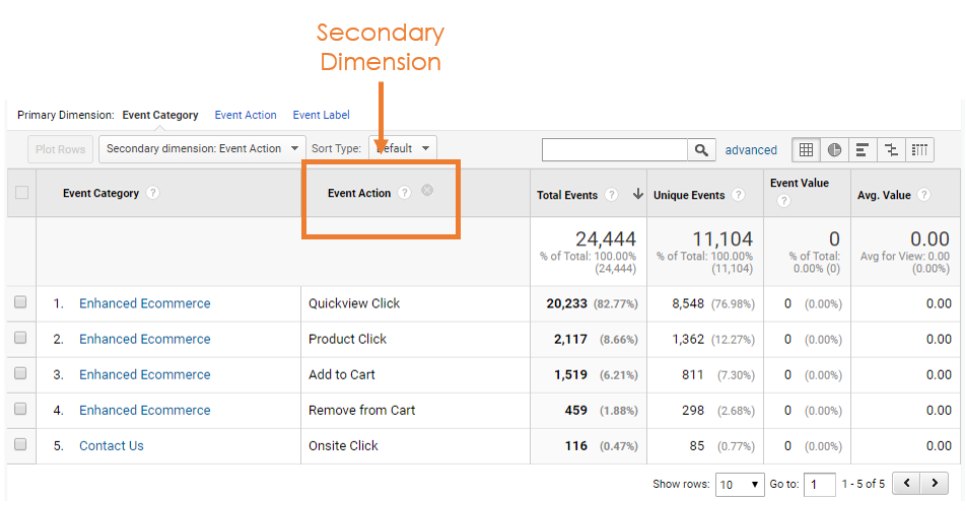Opening the Power of Second Measurement Analytics for Improved Data Insights and Decision-Making
In the realm of information analytics, key measurements usually take the limelight, however the real depth of insights lies within the world of secondary dimensions. By taking advantage of the power of second dimension analytics, companies can unveil covert patterns, uncover correlations, and essence a lot more significant conclusions from their information.
Relevance of Secondary Measurements
Exploring the importance of additional measurements in analytics reveals the concealed layers of data insights essential for informed decision-making in numerous domains. Secondary measurements supply a much deeper understanding of primary information by providing additional context and viewpoints. By including secondary measurements into analytics, organizations can remove much more nuanced and detailed insights from their datasets.
One secret significance of secondary measurements is their ability to segment and categorize key data, enabling a more in-depth analysis of details subsets within a dataset. This division allows companies to determine patterns, trends, and outliers that might not be noticeable when taking a look at the data all at once. Furthermore, additional measurements assist in discovering connections and dependences in between different variables, causing more precise forecasting and anticipating modeling.
Furthermore, second dimensions play an essential role in enhancing data visualization and coverage. By including secondary measurements to visualizations, such as charts or graphes, analysts can create extra interesting and informative depictions of data, facilitating much better communication of searchings for to stakeholders. On the whole, the integration of additional dimensions in analytics contributes in opening the complete potential of information and driving evidence-based decision-making.
Secret Advantages of Utilizing Additional Measurements
Using additional measurements in analytics uses organizations a tactical benefit by enhancing the depth and granularity of data understandings. By studying information making use of secondary dimensions such as time, place, gadget type, or customer demographics, companies can uncover patterns, trends, and connections that may otherwise stay concealed.
Moreover, the application of second measurements enhances the context in which key data is analyzed. By leveraging secondary dimensions in analytics, companies can harness the full potential of their information to drive much better decision-making and attain their organization goals.
Advanced Data Evaluation Strategies
A deep dive right into innovative data analysis strategies discloses sophisticated approaches for drawing out useful insights from complex datasets. One such method is maker learning, where formulas are utilized to identify patterns within data, predict results, and make data-driven decisions. This method enables the automation of analytical model building, allowing the handling of large quantities of data at a faster speed than traditional techniques.
Another innovative strategy is predictive read here analytics, which uses statistical formulas and device knowing strategies to anticipate future outcomes based upon historic data. By examining patterns and patterns, businesses can expect consumer habits, market patterns, and potential risks, encouraging them to make aggressive decisions.
Furthermore, message mining and sentiment analysis are useful methods for extracting understandings from unstructured information resources such as look at this site social media comments, customer evaluations, and study responses. By assessing text information, companies can understand client opinions, recognize emerging fads, and enhance their product and services based upon feedback.
Enhancing Decision-Making With Secondary Dimensions

Enhancing decision-making via secondary dimensions enables businesses to make more notified and targeted tactical selections. As an example, by segmenting client information based upon second measurements like buying history or interaction levels, firms can tailor their advertising methods to certain audience segments, causing boosted conversion rates and customer fulfillment. Moreover, secondary dimensions can aid identify relationships and relationships between various variables, enabling companies to make data-driven decisions that drive growth and success.
Executing Second Measurement Analytics
When including secondary dimensions in analytics, organizations can unlock deeper insights that drive strategic decision-making and improve total efficiency. This involves recognizing the details questions the organization looks for to answer and the information factors needed to address them.
Furthermore, organizations must leverage advanced analytics tools and modern technologies to simplify the process of including additional dimensions. These devices can automate data processing, analysis, and visualization, permitting organizations to concentrate on analyzing insights instead of manual information control.
Final Thought
In final thought, secondary measurement analytics play a vital role in enhancing data insights and decision-making processes. By using sophisticated information analysis strategies and carrying out secondary measurements efficiently, companies can open the power of their information to drive strategic organization decisions. The key advantages of using second dimensions can not be overstated, as they provide a deeper understanding of information trends and partnerships. It is necessary for companies to take advantage of secondary dimension analytics to remain competitive in today's data-driven landscape.
In the realm of information analytics, main dimensions often take the limelight, but the true deepness of understandings lies within the world of additional navigate to these guys dimensions.Utilizing additional measurements in analytics offers companies a calculated benefit by augmenting the depth and granularity of data insights. By leveraging secondary measurements in analytics, companies can harness the complete capacity of their data to drive much better decision-making and attain their business objectives.
Executing information validation processes and routine audits can assist maintain data top quality and dependability.
By utilizing sophisticated information evaluation techniques and carrying out additional measurements successfully, organizations can open the power of their data to drive strategic business decisions.